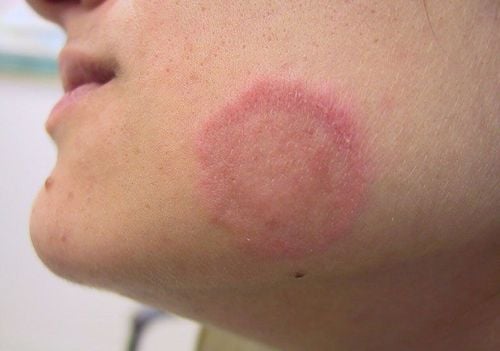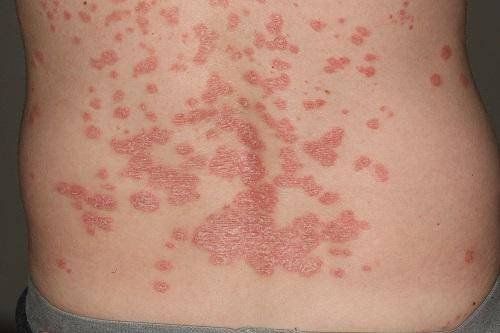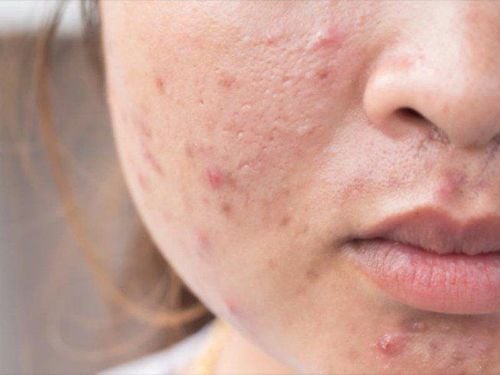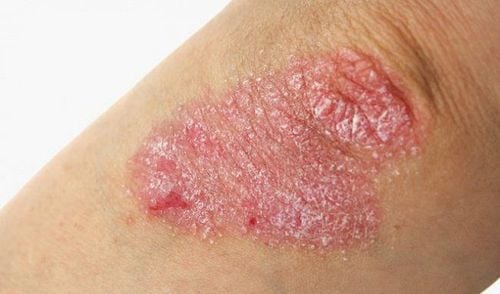This is an automatically translated article.
Dress syndrome, also known as a rare drug-induced reactive rash syndrome with eosinophilia and many systemic symptoms that cause organ damage.
1. What is Dress Syndrome?
Dress syndrome is a severe form of drug allergy manifesting with symptoms such as: fever, rash, hematologic abnormalities - eosinophilia and multi-organ damage.
This is a rare disease, according to research, it is estimated that Dress syndrome only occurs from 1/1000 to 1/10000; The mortality rate accounts for about 10% of all Dress syndrome cases.
Dress syndrome is also very difficult to detect, caused by unclear disease symptoms, like many other diseases.
2. Symptoms of Dress . syndrome
Manifestations of Dress syndrome usually start slowly, 2 - 6 weeks after starting drug treatment and can recur many times, or take a very long time to occur, after stopping the drug. The disease can be dangerous and life-threatening.

Hội chứng Dress không được điều trị có thể gây nguy hiểm tới tính mạng người bệnh
Dress syndrome also includes the following clinical signs and symptoms:
Severe allergic skin manifestations: A rash, first appearing on the face, then spreading all over the body and down the legs. The rash may progress to a vesicular form and is often accompanied by facial edema. Patients with high and very high fever (about 38-40 degrees), prolonged fever, difficult to reduce fever with conventional drugs. There is a hematological abnormality when testing is indicated: Eosinophilia increases, accompanied by a possible increase in lymphocytes (depending on the individual). Serious damage to other internal organs of the body such as: Liver, lung, kidney... Internal damage usually starts slowly, takes about 2-6 weeks after taking the drug suspected to cause symptoms. symptoms such as allergies and can persist and recur many times even after the patient has stopped the allergenic drug.
3. Causes of Dress . syndrome
The cause of Dress syndrome is mainly related to the drugs that the patient takes such as:
Epilepsy drugs such as: Phenytoin, phenobarbital, carbamazepine Non-inflammatory drugs: Steroids, paracetamol Enzyme inhibitors transfer, calcium drugs, antibiotics,...

Việc sử dụng một số loại thuốc là nguyên nhân chính dẫn đến hội chứng Dress
Factor HLA-B5801 is also closely associated with Dress syndrome due to allopurinol. Herpes viruses (especially HHV6, HHV7, EBV) are important triggers of Dress syndrome on the basis of drug response. Viral reactivation is the cause of frequent flare-ups even after the patient has stopped taking the medication. When infected with the herpes virus will make the disease worse and cause cross-reactivity with many other drugs.
4. Treatment of Dress .'s syndrome
4.1 If patient without severe organ damage , only mild to severe skin lesions): Strong or moderate topical corticosteroids (clobetasol, betamethasone) can be used 2-3 times daily for 1 week..
4.2 If the patient has severe organ damage Severe liver damage: Minimize drugs that are excreted by the liver or cause harm to the liver. Severe cases can only be resolved with liver transplant surgery.

Nếu người bệnh có gan bị tổn thương chỉ có thể được điều trị bằng phẫu thuật ghép gan
Immediately stop the drug you are using if in doubt. Limit the use of many drugs, on the list of drugs that can cause Dress syndrome, cross-reactivity occurs more often than other forms of drug allergies. Patients need rehydration, electrolytes, nutrition in accordance with the test Strict anti-infection Treatment of symptoms of organ damage, close monitoring by testing. In the course of treatment when you are suffering from Dress syndrome, it is necessary to learn carefully about the drug before using it. Take the medicine exactly as directed by the doctor, do not arbitrarily use the drug indiscriminately. Strict implementation will contribute to minimizing common drug allergies and avoiding life-threatening complications.
Any questions that need to be answered by a specialist doctor as well as if you have a need for examination and treatment at Vinmec International General Hospital, please book an appointment on the website to be served.
Please dial HOTLINE for more information or register for an appointment HERE. Download MyVinmec app to make appointments faster and to manage your bookings easily.
MORE
Are drug allergies dangerous? Penicillin Allergy: What is Amoxicillin? Uses, dosage and contraindications













